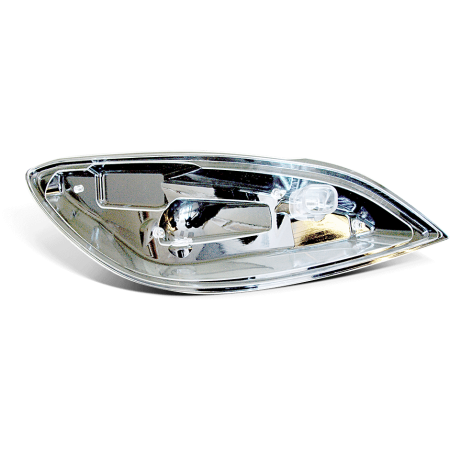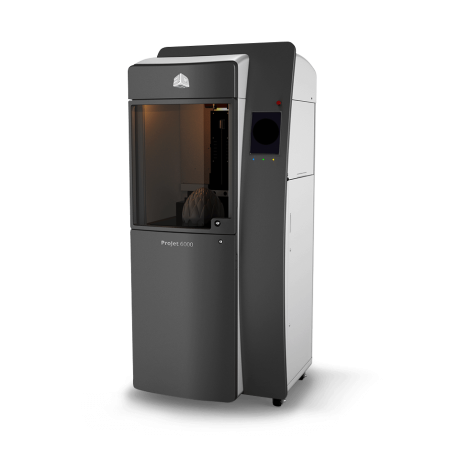Italian electric pump manufacturer Pedrollo has spent its 40 year history collaborating with global companies and communities to enable water extraction in parched areas such as the deserts of the Middle East and Africa, and underserved regions of Latin America. To stay up-to-date with ever-evolving legal requirements for yields standards and energy consumption, as well as secure Pedrollo’s future through product performance breakthroughs, Pedrollo’s research and development team is committed to constant product improvements. As part of a recent annual investment in innovation, Pedrollo decided to re-examine its prototyping process and explore 3D printing.
Pedrollo’s focus on evolving its prototyping process was motivated by two key desires: the first was to accelerate its design cycle, and the second was to further safeguard its intellectual property by bringing prototyping in-house. What Pedrollo did not expect were the performance enhancements enabled by its choice of 3D Systems Stereolithography (SLA) and clear 3D printing materials, VisiJet® SL Clear and Accura® ClearVue.
Selecting the right 3D printer for iterative prototyping
Before deciding to purchase a 3D printer, Pedrollo analyzed the market and studied the choices made by other companies that had already started 3D printing. Pedrollo then consulted with 3DZ, a 3D Systems reseller, and authorized dealer of leading professional 3D printers and 3D scanners based in Malta. 3DZ helped guide Pedrollo in its selection of the 3D Systems ProJet® 6000 based on its need for high quality parts and ease of use.
Once the 3D printer was installed at Pedrollo’s facility in San Bonifacio, Italy, 3DZ provided user training to help Pedrollo staff get up and running. According to company president and founder Silvano Pedrollo, the 3D printer was quickly integrated to deliver its intended purpose for producing faster and more frequent prototypes.
The ProJet 6000 SLA printer creates accurate 3D printed parts and prototypes and can reproduce features down to 0.002 inches or 0.050mm depending on geometry, orientation and build mode.
It offers a maximum build platform size of 10in x 10in x 10in (250mm x 250mm x 250mm) and a wide choice of materials that match or exceed the properties of traditional plastic materials. The ProJet 6000 also comes with 3D Sprint™, an exclusive software for managing the additive manufacturing process as well as preparing and optimizing CAD data for printing on 3D Systems’ plastic printers.
“Before we started 3D printing, the time required to create a prototype was very long and involved four to five months of waiting between the design phase and receiving the final model,” says Pedrollo. The introduction of 3D printing immediately reduced prototyping time by one-fifth, which steadily fell to less than 24 hours.
After successfully incorporating the ProJet 6000 into its workflow, Pedrollo decided to expand its productivity and capacity with the purchase of an additional 3D Systems printer, the ProX® 800, which offers efficient, high throughput SLA at a larger scale. The ProX 800 also ships with 3D Sprint and features a build platform of 25.6in x 29.5in x 21.65in (650mm x 750mm x 550mm). Like other 3D Systems SLA machines, the ProX 800 produces precise and accurate parts and is compatible with a wide range of high quality materials.
Safeguarding IP with in-house 3D printing
With over 150 patents to its name, Pedrollo’s intellectual heritage is one of its defining strengths. Investing in in-house 3D printing was therefore readily justifiable due to the ability to maintain complete confidentiality with its designs and protect its product development and research findings. Silvano Pedrollo says bringing 3D printing in-house has increased his company’s annual income by maintaining a definitive lead against competing firms and counterfeiters.
“Counterfeiting reduces our annual income by nearly 30%,” says Pedrollo. “The ability to protect our intellectual property has enabled us to achieve full confidentiality on our projects and regain revenue.”
Clear prototyping advances product performance
Beyond the anticipated benefits in speed and IP security from adopting 3D printing, 3D Systems’ clear SLA materials gave Pedrollo the ability to advance internal pump performance by observing internal fluid flow through the external housing. Select 3D Systems clear materials such as VisiJet SL Clear and Accura ClearVue can create 3D printed parts with the same visual qualities of polycarbonate, acrylic, crystal polystyrene or glass. In laboratory testing of clear materials, 3D Systems’ Accura ClearVue was shown to be the clearest, most transparent material on the market.
For prototyping the functionality of its pumps, the choice of clear materials enabled Pedrollo to replace guesswork with observation to pinpoint and alter internal geometries where fluid flow was disrupted or suboptimal. “The ability to quickly and cost-effectively create clear prototypes is invaluable to our product development process because it enables us to see fluid flow patterns and shows us how our designs actually work as compared to our expectations,” said Pedrollo. “By seeing what is happening and why, we are able to make better informed decisions to evolve our designs into superior final products.”
Jigs and fixtures and final parts
Now that Pedrollo has fully integrated 3D printing into its design and prototyping process, the company continues to expand its uses. 3D printing is now used to produce parts ranging from technical components and aesthetic details to spare parts, jigs and fixtures, and even containers for gadgets.
“We use our 3D Systems 3D printers on a daily basis,” said Pedrollo. “They are exceptionally versatile, and we continue to look for and find new ways to maximize their value.”

